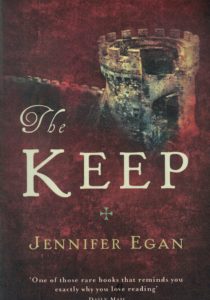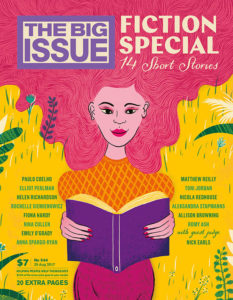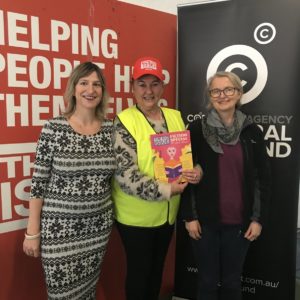 I haven’t read Egan’s award-winning ‘A Visit From the Goon Squad’ (2010) but ‘The Keep’ (2006) appears to be a precursor re her interest in metafiction, the use of intertextual devices etc. The ‘hero’ here is Danny, a New York dude who arrives in an unnamed Eastern European town because a childhood friend, Howard, sent him a free airfare and he had to get out of New York for crossing some underworld types. Danny strikes out at night to find the castle that Howard is renovating, intending to turn it into a hotel. There is no light, strange undergrowth and an impenetrable wall. Danny is dragging a portable satellite dish with him because he can’t stand to be out of touch with his NY friends. Funny how this plot device is redundant now, just ten years later, such is the perils of the speed of modern technology for writers.
I haven’t read Egan’s award-winning ‘A Visit From the Goon Squad’ (2010) but ‘The Keep’ (2006) appears to be a precursor re her interest in metafiction, the use of intertextual devices etc. The ‘hero’ here is Danny, a New York dude who arrives in an unnamed Eastern European town because a childhood friend, Howard, sent him a free airfare and he had to get out of New York for crossing some underworld types. Danny strikes out at night to find the castle that Howard is renovating, intending to turn it into a hotel. There is no light, strange undergrowth and an impenetrable wall. Danny is dragging a portable satellite dish with him because he can’t stand to be out of touch with his NY friends. Funny how this plot device is redundant now, just ten years later, such is the perils of the speed of modern technology for writers.
While the smart-talking Danny could have been irritating, he is actually quite funny, and because he’s self-deprecating we forgive him his cynicism. He does get into the castle and find Howard (who after descending to drug-addiction etc. after a childhood trauma has made a motza out of bond trading) who is a sort of Steve Jobs figure to a horde of back-packer volunteers who are doing the renovation for him. There is also a tough-guy offsider called Mick who Danny recognises as a ‘number two’ figure to the great man, because Danny, too, has played the ‘number two’ role to some ‘number one’ men as well.
Things start to get decidedly stranger from here. There is a weird pool in the castle grounds where Danny sees strange shapes move beneath the water. There is also a keep where an ancient baroness (My family have lived here for generations and you can’t get rid of me – we saw off the Tartars and we’ll see off you etc.) is holed up.
Meanwhile we meet another character, Ray, who is doing time for murder and undertaking a writing course in gaol run by Holly. Ray finds he is good at writing and it provides him with the release from his predicament he craves (his cell-mate gets his release by listening to messages from a ‘radio’ he’s made out of a cardboard box). It probably shouldn’t surprise anyone that Ray is actually writing the story about Danny and the castle. His fellow prisoners in the writing class ask newbie questions like: ‘Did this happen to you Ray?’, ‘You’re Danny aren’t you?’, ‘I don’t believe you could make this seem so real if it didn’t happen to you’ etc. As well as writing, Ray is falling for the teacher, Holly.
As the story progresses we find out that Danny has played a part in the childhood trauma suffered by Howard, and he (Danny) begins to suspect that Howard has brought him to the castle to wreak some form of revenge. Danny experiences a number of mishaps that may or may not be affecting his mind – with a supreme effort he manages to escape to the nearby town. Waiting around he buys an antique map of the castle, and when he can’t get out of the town and goes back to the castle, Howard thinks he’s a hero for finding the map that shows some ‘missing links’, i.e. tunnels that thread beneath the castle. These tunnels play a part in the denouement which neatly connects Danny, Ray, Howard and Mick.
Egan runs a fine line, messing with the readers’ sense of suspended disbelief, but it is so much fun, and Danny turns out to be such an endearing character, that she gets away with it.



